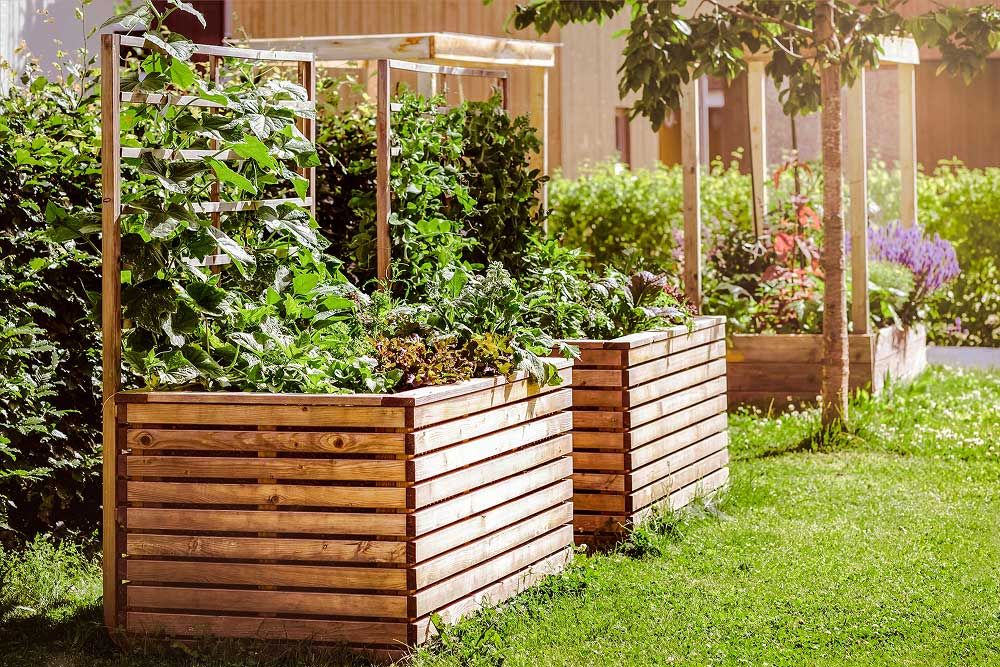Raised garden bed plans for vegetables are useful for growing vegetables at home. Many people use DIY raised garden beds when the native soil is compacted, is of low quality, or has poor drainage. Soil control is often the primary benefit of such garden beds. Besides, with raised beds, there is no need to bend over to pull the harvested vegetables or weeds, thus avoiding any problems, especially with limited space.
Learn about the different types of raised garden beds
To build a raised bed for vegetable gardening, one must look into the various styles and sizes of plans and kits. Most of these are suitable for growing vegetables and herbs at home. After learning how to do gardening with these raised beds, one can move on to build DIY raised garden beds for seasonal flowers as well. Many garden beds are usually available as open-bottom varieties, which can be directly placed on the ground.
There are elevated raised beds that can be assembled on legs. Such beds are suitable for small decks and patios. Some of the best materials for raised vegetable beds are cedar ones. Cedar raised garden beds are also available as kits made of untreated wood and are naturally resistant to insects and rot. Other materials used for these beds include vinyl, plastic, and composite. These make for durable containers that can last a long time. Besides, garden beds made of these materials are resistant to warping and require minimum maintenance.
Go the DIY way
When looking at ways to build a vegetable garden bed, it can be helpful to have some basic experience with using common tools. While kits can be easily purchased, building these beds is also not a complicated process. One can find step-by-step raised garden bed tutorials through online videos and DIY websites.
To build a simple bed, just make a four-sided structure with 2 x 10-inch lumber, which has been cut to length. These dimensions can change depending on the space one has for their garden. In general, most vegetables and herbs need at least around 10 inches of soil to grow well. Besides this, the garden bed must ideally be less or equal to four feet wide. Then, make a rectangle by placing the shorter walls flush with the longer walls. Follow this up by drilling pilot holes, and fasten the short walls to the end of the longer ones using 2-1/2-inch deck screws.
Pick a good site for the garden bed
Whether making DIY wooden raised garden beds or purchasing readymade kits, it is crucial to pick the right location. Make sure that the spot chosen to build the raised garden bed for vegetables has enough sunlight and good drainage. Pick a site that is flat and sunny. Even if the soil in this spot is not suitable for plants, it is not a problem because the beds will have their own high-quality soil added to them. In the case of stackable raised garden beds, ensure there’s enough extra height added to the walls or that there is a frame made for placing the beds at proper heights.
Prepare the ground for the garden bed
One of the top tips for constructing raised vegetable beds is to ensure that the ground is prepared well. It must be a flat and well-leveled surface. Dig out any spots that seem to be high areas. Also, get rid of sticks, rocks, and other debris from the area. Before filling up the raised garden beds, it is important to lay all the frames out in the spot that has been chosen. Leaving some space between each of the garden bed frames makes it easier to walk around or push a wheelbarrow or land mower around. Ensure that the space between the frames is even and not haphazard. Once the raised garden beds are filled, it will be difficult to move them later. So, make sure to place them in a way that will help tend to the garden properly.
Put the right layers inside the garden beds
Most vegetable garden bed construction guides recommend putting the right layers within the garden beds. This is as important as building the beds properly. The first layer to be put at the bottom of the raised garden bed can be newspaper or cardboard. Alternatively, weed blacks, builder’s paper, hardware cloth, or landscape fabric can also work well. All of these work as barriers between the soil in the yard and the soil in the bed to keep grass and weeds from growing at the lower surfaces of the bed. At the same time, these materials are porous enough to allow water to pass through with drainage properly. The weed barrier can be secured in place using landscape fabric pegs that are tightly fastened to the inside edge of the garden bed.
While some prefer to put rocks and stones above these weed-blocking layers, rocks tend to prevent proper drainage. This can lead to water pooling, causing root rot and plant damage. Instead, place some sticks, which can be as large as 1-2 inches in diameter. Simply throw them in haphazardly to encourage drainage and aeration.
